Just weeks after becoming fully operational, the Stratospheric Observatory for Infrared Astronomy (SOFIA) is facing storage in 2015. The airborne observatory costs NASA about $85 million annually, making it one of the more expensive missions the agency has. Yesterday, administrator Charlie Bolden told reporters that it was a matter of making choices, and that the money from SOFIA could go to missions such as Cassini.
This isn’t the first time that SOFIA faced budget challenges. Back in 2006, for example, NASA placed the program on hold due to several program and budget challenges that are outlined in this Universe Today article, but after a review the observatory program moved forward.
Much of the expense comes from flying the modified 747 airplane to carry the telescope, which was built by the Germans and has a mirror of about 2.5 meters (100 inches). NASA said it is possible that DLR could take on more of the cost, and said it is in discussions with the German space agency to figure out the telescope’s future.
The telescope saw its first light in 2010. Here are some of the special things it’s spotted in three years and about 400 hours of flying.
Mighty Jupiter’s heat
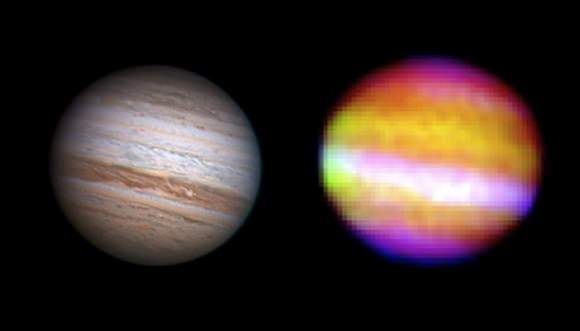
This is one of the first observations that SOFIA performed. “The crowning accomplishment of the night came when scientists on board SOFIA recorded images of Jupiter,” said USRA SOFIA senior science advisor Eric Becklin in 2010. “The composite image from SOFIA shows heat, trapped since the formation of the planet, pouring out of Jupiter’s interior through holes in its clouds.”
M82 supernova
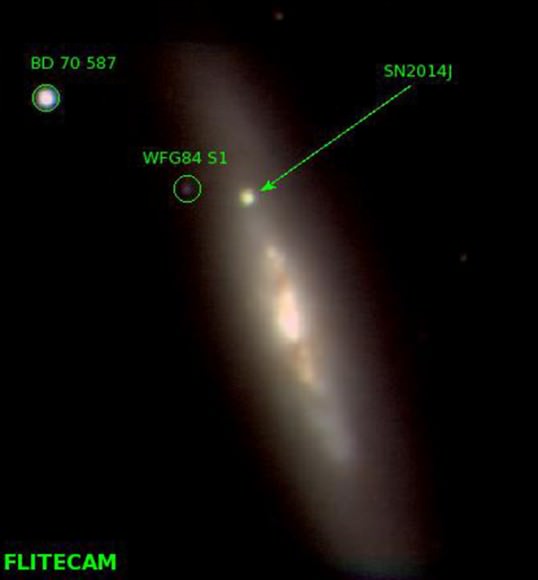
Although a lot of observatories are checking out the recent star explosion, SOFIA’s observations found heavy metals being thrown out in the supernova. “When a Type Ia supernova explodes, the densest, hottest region within the core produces nickel 56,” said Howie Marion from the University of Texas at Austin, a co-investigator aboard the flight, a few days ago. “The radioactive decay of nickel-56 through cobalt-56 to iron-56 produces the light we are observing tonight. At this life phase of the supernova, about one month after we first saw the explosion, the H- and K-band spectra are dominated by lines of ionized cobalt. We plan to study the spectral features produced by these lines over a period of time and see how they change relative to each other. That will help us define the mass of the radioactive core of the supernova.”
A star nursery
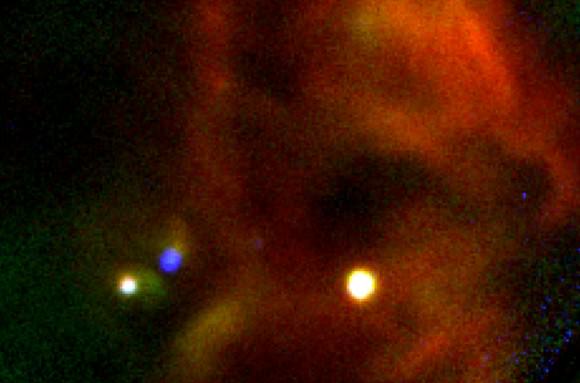
In 2011, SOFIA turned its eyes to star-forming region W40 and was able to peer through the dust to see some interesting things. The telescope was able to look at the bright nebula in the center, which includes six huge stars that are six to 20 times more massive than the sun.
Stars forming in Orion
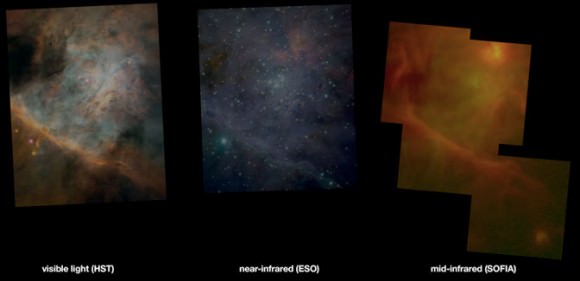
These three pictures demonstrate how one famous star-forming region — in the Orion nebula — appears different in three different telescopes. As NASA wrote in 2011, “SOFIA’s observations reveal distinctly different aspects of the M42 star formation complex than the other images. For example, the dense dust cloud at upper left is completely opaque in the visible-light image, partly transparent in the near-infrared image, and is seen shining with its own heat radiation in the SOFIA mid-infrared image. The hot stars of the Trapezium cluster are seen just above the centers of the visible-light and near-infrared images, but they are almost undetectable in the SOFIA image. At upper right, the dust-embedded cluster of high-luminosity stars that is the most prominent feature in the SOFIA mid-infrared image is less apparent in the near-infrared image and is completely hidden in the visible-light image.”

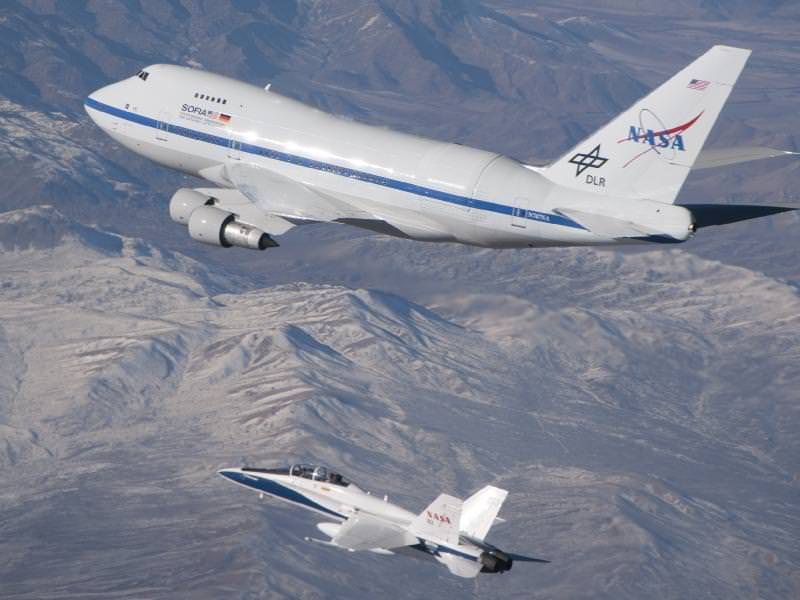
OTay and alrighty then… if the SOPHIA telescope is retired from the project, is there another application, ground based or mountaintop for it?